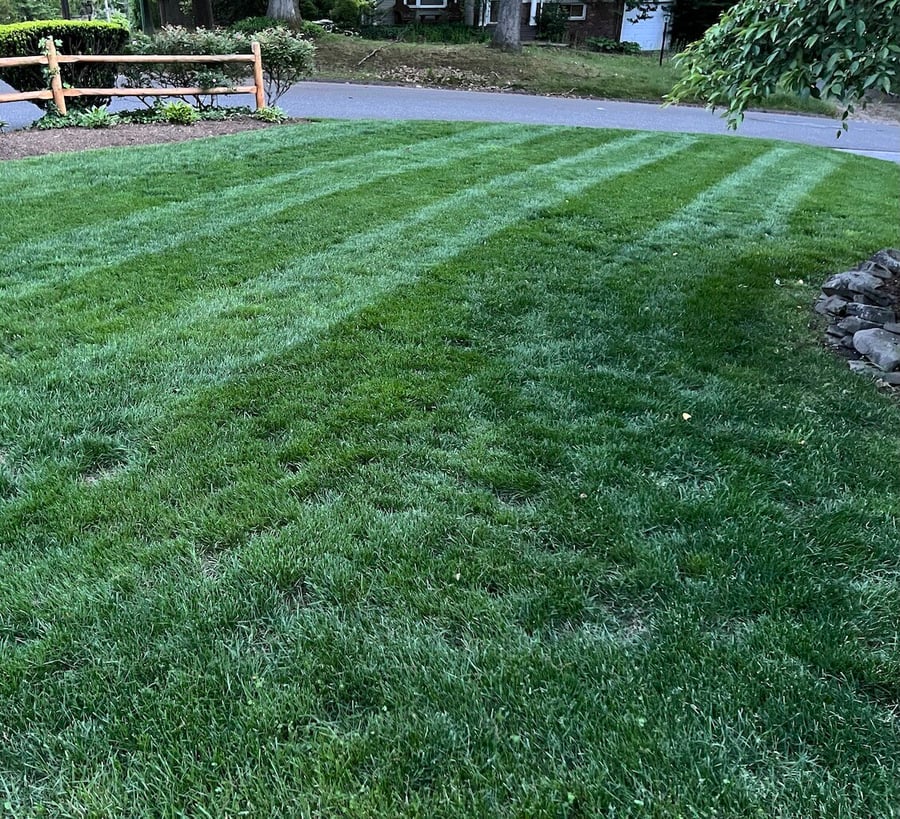
As a busy homeowner, you dream of a lush, green lawn that's the envy of the neighborhood. But between work, family obligations, and the occasional round of golf, who has time for endless yard work? That's where lawn aeration comes in - a simple, effective way to maintain a healthy lawn without breaking a sweat (or your back). In this article, we'll dig into the basics of lawn aeration and why it's a secret weapon for a picture-perfect yard.
What is Lawn Aeration?
Lawn aeration is the process of removing small plugs of soil from your lawn, creating tiny holes that allow air, water, and nutrients to penetrate deep into the grass roots. Over time, soil becomes compacted from foot traffic, mowing, and weather conditions. This compaction makes it difficult for your grass to "breathe" and absorb the essentials it needs to thrive. Aeration alleviates this compaction, giving your lawn room to grow.
There are two main types of aeration:
- Core Aeration: This method uses a machine to pull out small plugs of soil, leaving visible holes in your lawn. These holes gradually fill in with new grass growth, creating a thicker, healthier lawn over time.
- Spike Aeration: Spike aerators use solid tines to poke holes in the soil without removing any material. While less effective than core aeration, it can still provide some benefits for mildly compacted lawns.
The Benefits of Lawn Aeration
Now that we know what aeration is, let's talk about why it's worth adding to your lawn care routine:
- Stronger Root Growth: By creating channels for oxygen, water, and nutrients to reach the roots, aeration encourages deeper, healthier root development. A robust root system is the foundation of a resilient lawn that can withstand stress from heat, drought, and heavy foot traffic.
- Improved Nutrient Uptake: Compacted soil acts as a barrier, preventing fertilizer and other nutrients from reaching the roots where they're needed most. Aeration breaks through this barrier, allowing your grass to absorb nutrients more efficiently. This means you can use less fertilizer and still achieve better results.
- Better Drainage: Have you ever noticed puddles forming on your lawn after a heavy rain? Compacted soil doesn't absorb water easily, leading to drainage issues and even fungal growth. Aeration helps water penetrate the soil more quickly, reducing runoff and promoting a healthier growing environment.
- Thatch Reduction: Thatch is the layer of dead grass, roots, and stems that accumulates between the soil and the living grass blades. A little thatch is beneficial, but too much can suffocate your lawn. Aeration helps break up thatch, allowing microorganisms to decompose it more efficiently.
- Enhanced Overseeding Results: If you're planning to overseed your lawn to fill in bare spots or introduce a new grass variety, aeration can significantly improve seed-to-soil contact. The holes created by aeration provide the perfect pockets for seeds to germinate and establish strong roots.
When to Aerate Your Lawn
The best time to aerate your lawn depends on the type of grass you have:
- Cool-Season Grasses (Fescue, Ryegrass, Bluegrass): Aerate in early fall, when the grass is actively growing and has time to recover before winter.
- Warm-Season Grasses (Bermuda, Zoysia, St. Augustine): Aerate in late spring or early summer, as these grasses thrive in the heat and will quickly fill in the holes.
As a general rule, aim to aerate your lawn at least once a year, especially if you have heavy clay soil or a lot of foot traffic. If your lawn is severely compacted or you're dealing with persistent bare spots, you may benefit from aerating twice a year.
DIY vs. Professional Aeration Services
If you're handy with yard tools and don't mind a workout, you can rent an aerator from your local home improvement store and tackle the job yourself. However, keep in mind that aerators are heavy machines that require some muscle to operate, and the process can be time-consuming for larger lawns.
For busy homeowners who value their time and energy, professional lawn aeration services offer a convenient solution. A skilled landscaping team will have the right equipment and expertise to aerate your lawn efficiently, ensuring even coverage and optimal results. Plus, they can provide personalized recommendations based on your lawn's specific needs.
Post-Aeration Care
After aerating your lawn, give it a little TLC to help it recover and thrive:
- Water your lawn deeply and regularly, especially if you live in a dry climate or have sandy soil.
- Apply a slow-release fertilizer to provide a steady supply of nutrients as your grass grows. Opt for an organic fertilizer if you prefer a more eco-friendly approach.
- If you're overseeding, keep the seeds consistently moist until they germinate and establish strong roots.
- Avoid heavy foot traffic on your lawn for a few weeks to allow the grass to fill in the aeration holes.
The Bottom Line
Lawn aeration may seem like just another chore on your endless to-do list, but trust me - it's a game-changer for achieving a lush, healthy lawn without the backbreaking work. By allowing your grass to breathe, absorb nutrients, and establish deep roots, aeration sets the stage for a yard that's the talk of the neighborhood.
So, whether you're a weekend warrior or prefer to leave it to the pros, make lawn aeration a regular part of your lawn care routine. Your grass (and your neighbors) will thank you.



